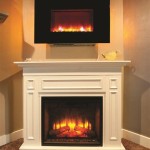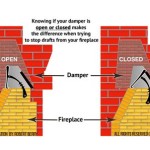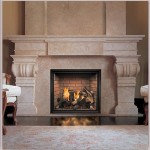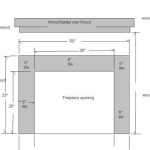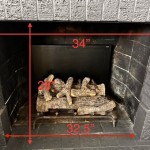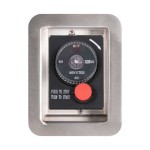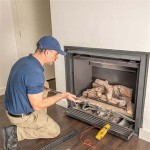```html
Converting a Gas Fireplace Into a Wood-Burning Fireplace: A Comprehensive Guide
Many homeowners find themselves considering converting their existing gas fireplace into a traditional wood-burning fireplace. This conversion offers the appeal of a crackling fire, the authentic aroma of burning wood, and a potential sense of self-sufficiency during power outages. However, this undertaking is not a simple swap. It involves careful consideration of safety regulations, structural requirements, and potential modifications to ensure a functional and safe wood-burning fireplace. This article details the crucial aspects of converting a gas fireplace into a wood-burning one.
Understanding the Differences Between Gas and Wood-Burning Fireplaces
Gas fireplaces and wood-burning fireplaces are fundamentally different systems designed with distinct operational parameters. A gas fireplace is engineered to safely burn natural gas or propane, releasing combustion byproducts through a relatively small vent. These vents are typically categorized as either direct vent or B-vent systems. Direct vent systems draw combustion air from outside and exhaust fumes directly through a sealed system, preventing interior air from mixing with the combustion process. B-vent systems rely on indoor air for combustion and vent exhaust vertically through a chimney. The heat output and airflow requirements for gas fireplaces are significantly lower than for wood-burning fireplaces.
Wood-burning fireplaces, on the other hand, require a substantial chimney to safely exhaust large volumes of smoke and combustion gases. The chimney must create a strong draft to pull air into the firebox and efficiently expel the exhaust. The firebox itself needs to be constructed of fire-resistant materials capable of withstanding extremely high temperatures. Because of these differences the structural integrity of a gas fireplace is not comparable to the structural integrity of a wood fireplace.
Attempting to burn wood in a gas fireplace without proper modifications is extremely dangerous. The existing vent system is not designed to handle the heat, smoke, and creosote produced by burning wood, leading to potential hazards such as chimney fires, carbon monoxide poisoning, and structural damage to the home.
Assessing the Feasibility of Conversion
Before proceeding with any conversion plans, a thorough assessment of the existing fireplace and its surrounding structure is imperative. Several factors determine whether a conversion is feasible and what modifications will be necessary. This assessment should be done by a qualified professional.
The first step is to examine the existing chimney. A wood-burning fireplace requires a larger chimney flue than most gas fireplaces. The flue size is critical for proper draft and efficient exhaust. If the existing chimney is too small, a larger flue liner will need to be installed. This can be a complex and costly process, potentially requiring masonry work and structural modifications.
Next, the firebox must be evaluated. Standard gas fireplace fireboxes are typically not designed to withstand the intense heat of a wood fire. The existing firebox may need to be replaced with a reinforced firebox constructed of firebrick or other heat-resistant materials. The size and shape of the firebox are also important considerations, as they influence the efficiency of the fire and the amount of heat radiated into the room.
The overall structure of the fireplace and the surrounding walls must also be inspected for any signs of damage or weakness. Cracks, crumbling mortar, or other structural issues need to be addressed before any conversion work begins. It is also essential to ensure that the fireplace meets local building codes and fire safety regulations. These codes vary depending on location, so it is crucial to consult with local building officials to obtain the necessary permits and approvals.
Key Structural Modifications Required for Conversion
Assuming the feasibility assessment indicates that conversion is possible, several structural modifications will likely be required. These modifications are essential to ensure the safe and efficient operation of the wood-burning fireplace.
Chimney Modification and Liner Installation: The most critical modification is often the chimney. The existing flue liner may need to be replaced with a larger, fire-resistant liner suitable for wood-burning applications. Stainless steel liners are a common choice due to their durability and resistance to corrosion. The liner must be properly insulated to prevent heat loss and reduce the risk of condensation, which can contribute to creosote buildup. The chimney cap should also be inspected and replaced if necessary to prevent rain, snow, and debris from entering the chimney.
Firebox Replacement and Reinforcement: The existing gas fireplace firebox will almost certainly need to be replaced with a firebox designed for wood-burning. This firebox should be constructed of heavy-duty firebrick or other heat-resistant materials capable of withstanding extreme temperatures. The firebox should also be properly sized to accommodate the desired size of the fire and to ensure efficient combustion. In some cases, the existing fireplace opening may need to be enlarged to accommodate the new firebox.
Damper Installation : A functional damper is crucial for controlling airflow and preventing heat loss when the fireplace is not in use. The damper should be located at the base of the chimney and should be easily accessible for opening and closing. A properly functioning damper prevents cold air from entering the home and helps to maintain consistent indoor temperatures. The damper should be inspected and repaired or replaced as needed to ensure a tight seal.
Hearth Extension and Protection: The hearth, the non-combustible area in front of the fireplace opening, must be of sufficient size to protect the surrounding flooring from sparks and embers. The hearth extension must meet specific size requirements based on the size of the firebox opening, as outlined in local building codes. The hearth should be constructed of fire-resistant materials such as brick, stone, or tile. Additional protection, such as a fireplace screen, may also be necessary to prevent sparks from escaping the fireplace.
Air Supply Considerations: Wood-burning fireplaces require a constant supply of air to support combustion. In some cases, the existing room may not provide sufficient air, leading to poor draft and inefficient burning. One solution is to install an outside air kit, which draws air directly from the outdoors and supplies it to the firebox. This can improve the efficiency of the fire and reduce the risk of smoke entering the room. Another option is to ensure that the room is adequately ventilated by opening a window or door slightly while the fireplace is in use.
Addressing Safety Concerns and Regulatory Compliance
Safety is the paramount concern when converting a gas fireplace to a wood-burning one. Improper installation or inadequate modifications can lead to serious hazards, including chimney fires, carbon monoxide poisoning, and structural damage to the home. It is essential to adhere to all applicable building codes and fire safety regulations and to consult with qualified professionals throughout the conversion process.
Carbon monoxide detectors should be installed on every level of the home, especially near sleeping areas. These detectors should be tested regularly to ensure they are functioning properly. A chimney sweep should be hired to inspect and clean the chimney at least once a year to remove creosote and other debris that can contribute to chimney fires.
Proper wood storage is also important. Wood should be stored in a dry, well-ventilated area away from the house to prevent insect infestations and to ensure that the wood is properly seasoned. Seasoned wood burns more efficiently and produces less smoke and creosote than green wood.
It is important to familiarize oneself with local burning regulations and restrictions. Some municipalities have restrictions on the types of wood that can be burned, as well as restrictions on burning during certain times of the year or during periods of poor air quality. Violating these regulations can result in fines or other penalties.
Finally, it is essential to have a comprehensive fire safety plan in place. This plan should include a designated escape route, a fire extinguisher readily available near the fireplace, and a clear understanding of how to respond in the event of a fire. Regular fire drills can help ensure that everyone in the household knows what to do in an emergency.
Converting a gas fireplace to a wood-burning one is a complex project requiring careful planning, structural modifications, and adherence to safety regulations. While the appeal of a wood-burning fireplace is undeniable, it is important to weigh the costs and benefits carefully before proceeding. Consulting with qualified professionals and obtaining the necessary permits are essential steps to ensure a safe and successful conversion.
```
Want To Convert Gas Wood Fireplace Full Service Chimney

Want To Convert Gas Wood Fireplace Full Service Chimney

Convert From Wood To Gas With A Insert The Kernel Burner

Gas To Wood Fireplace Conversion Overland Park Ks Firplace Service

Convert Gas Fireplace To Wood

Want To Convert Gas Wood Fireplace Full Service Chimney

Converting A Fireplace To Wood Burning Stove Chesneys

Remodel Or Upgrade Your Existing Fireplace The Kernel Burner

Can A Wood Burning Fireplace Be Converted To Gas The Flame Company

What S The Cost To Convert A Wood Fireplace Gas Orange County Register
Related Posts

